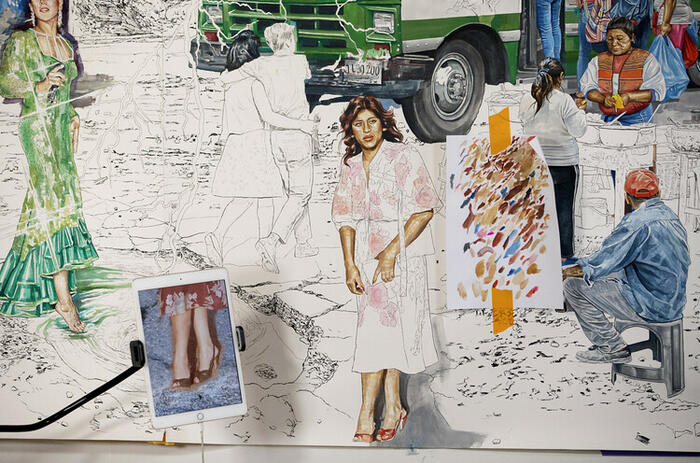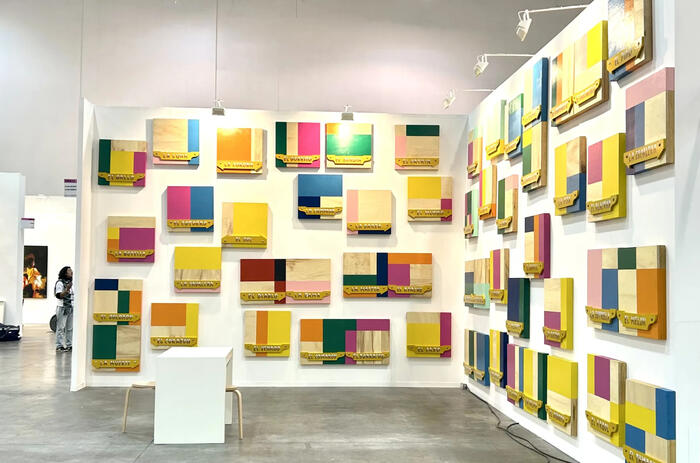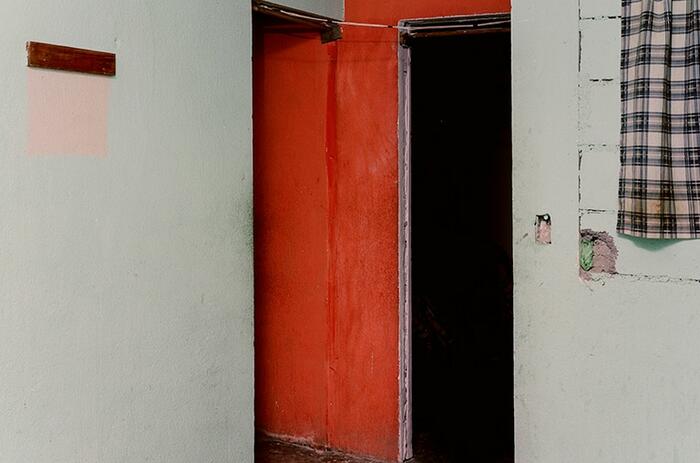COLLABORATIVE NETWORKS FUEL THE GROWTH OF MEXICO CITY'S CONTEMPORARY ART GALLERY SCENE
Mexico has emerged as a significant contemporary art hub on the international stage. Since the inception of Zona Maco, Mexico City has become a key destination for cultural pilgrims, marking the start of the global art fair calendar. In 2024, the fair celebrated its 20th anniversary, setting a record with over 80,000 visitors. This year, it maintained its strong attendance, welcoming 81,500 visitors and showcasing 200 galleries from 30 countries worldwide1. Marking the start of the year, Zona Maco sets the tone for Mexico City's art scene, after which the following months adopt a calmer rhythm. However, the city’s vibrant cultural offerings persist, serving as a prelude to the selection of curatorial projects and artists that will be featured in the next edition of the Art Week.

One of the key factors behind the strengthening of Mexico’s commercial contemporary art sector is the creation of GAMA (Galerías de Arte Mexicano Asociadas) in 2020. Established during the pandemic in response to the government’s lack of support for gallery spaces, GAMA emerged as a unifying force for the industry. Today, 28 galleries are part of this cooperative network, fostering stronger collaboration within the sector.GAMA follows a model long established in other countries, mirroring organizations such as ADAA (Art Dealers Association of America) in the U.S. and CPGA (Comité Professionnel des Galeries d’Art) in France.
This collective effort has brought a noticeable transformation to Mexico’s art market, particularly in the post-pandemic landscape. While the cultural sector has long been a vital force in the Mexican economy—contributing 2.7% to the national GDP and accounting for 3.5% of employment in 20232—the commercial segment remained less visible until GAMA’s collaborative initiatives helped amplify its presence. Within the broader cultural sector, visual and plastic arts—which encompass gallery operations—contribute 4.2% to the national economy. Additionally, in 2020, Mexico City ranked fifth among global regions with the highest share of employment in cultural and creative industries, following California and Tokyo3. This year, beyond the statistics, the energy and dynamics of Art Week visibly underscored the sector’s growing vitality and momentum.
Beyond its economic contributions, culture plays a crucial role in improving social and urban conditions. In the case of contemporary art galleries, we see a strong concentration in neighborhoods such as Roma, Condesa, Juárez, and San Miguel Chapultepec. These areas not only share high levels of economic activity but have also experienced an improved perception of safety4. GAMA’s initiative to create gallery routes—now positively emulated by other players—has encouraged hundreds of visitors to explore neighborhoods they might not have ventured into otherwise.
A particularly compelling example is the Doctores neighborhood. Previously regarded as an unsafe area, by 2018 it had become home to Laguna, a former textile factory in the neighborhood has been transformed into, a multidisciplinary cultural space, further solidifying the area’s artistic revival. It hosts 19 cultural initiatives spanning design, architecture, and contemporary art. Since then, it has benefited from various inclusion programs, attracting hundreds of visitors who support local businesses and contribute to overall economic activity. The latest example of this domino effect in the development of contemporary cultural spaces in unexpected locations is OMR’s recent Ad Minoliti exhibition, held in their warehouse in Doctores. Despite its discreet location, collectors, curators, and art enthusiasts eagerly attended the event. Similarly, Santa María La Ribera and Atlampa are two neighboring areas that have increasingly attracted cultural pilgrims. The establishment of Casa Wabi Sabino and Studio Bosco Sodi in 2023 paved the way for other contemporary art venues, such as Caleta, Naranjo 141, and Casa Siza, to open their doors. Each of these spaces collaborates with national and international artists and galleries, exemplified by the synergy between New York’s Kasmin Gallery and Casa Siza during Art Week.
This growing and diversifying cultural landscape adds to the richness of the neighborhood’s streets, complementing iconic landmarks like the Vasconcelos Library—designed by Alberto Kalach, the same architect behind Casa Wabi Sabino—and the Kiosko Morisco. Once primarily known for housing factories of major companies such as Coca-Cola Femsa and Jumex, the area is increasingly recognized for its contemporary art scene. Both neighborhoods are also home to a rising number of artist studios, fostering dynamic interactions between galleries, the local community, and the artistic ecosystem. This shift moves beyond the notion of isolated artist enclaves, instead promoting the development of strong, interconnected creative communities.
In this non-exhaustive list of contemporary art initiatives shaping Mexico City, we find Lago/Algo, a large exhibition branch of the OMR gallery. Opened in 2022 in the heart of the second section of Bosque de Chapultepec, this space is uniquely positioned on the lakeshore, surrounded by nature. It offers an unparalleled setting for large-scale installations and works by the gallery’s artists, paired with curatorial projects that achieve museum-level quality. The increased focus on this area from a contemporary art perspective has also led to Chapultepec: Naturaleza y Cultura, a joint initiative between artist Gabriel Orozco and the government. Orozco collaborated with experts in environmental restoration, urban infrastructure, history, engineering, archaeology, architecture, landscaping, and gardening to revitalize the park, which now hosts new and diverse cultural spaces.
Galleries represent just one piece of the larger ecosystem that defines Mexico City’s contemporary art scene. The industry’s rapid growth is also driven by an increasing number of collectors establishing Mexican venues for their foundations, stronger synergies between galleries and both private and public museums, and a robust educational network. With the continued expansion of Mexico’s contemporary art scene and the solidification of early February as a key moment in the global art calendar, there is optimism that the city’s enhanced reputation—both in terms of safety and cultural vibrancy—will extend beyond the local sphere to a broader international stage.
1 Milenio
2 Cuenta Satélite de la Cultura, INEGI, 2023.
3 OECD
4 EncuestaNacional de Seguridad Pública Urbana, INEGI, 2023.







